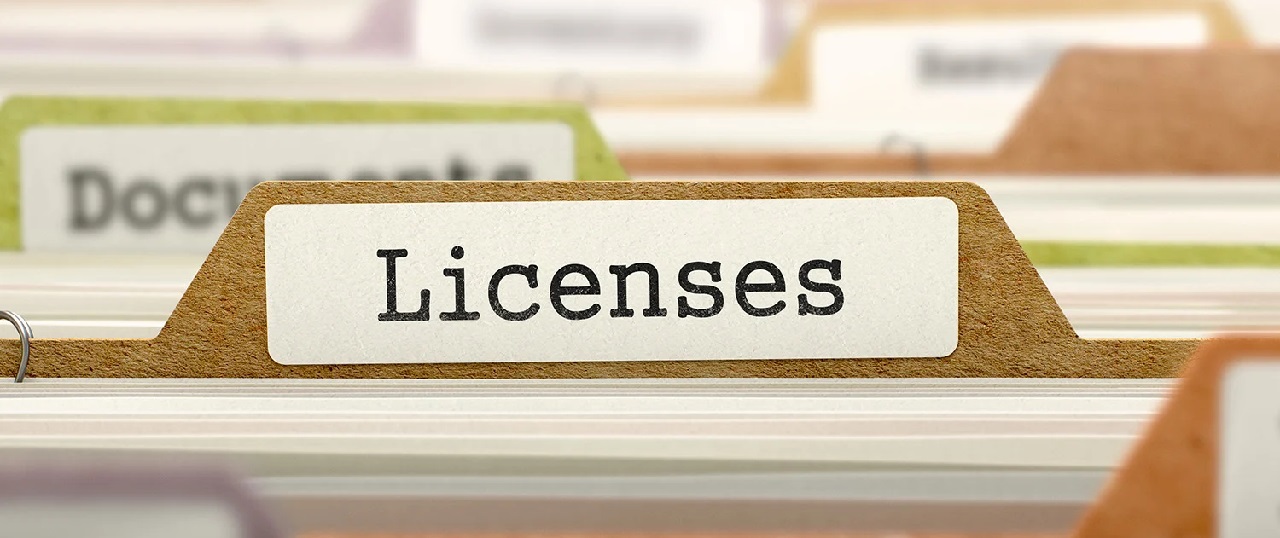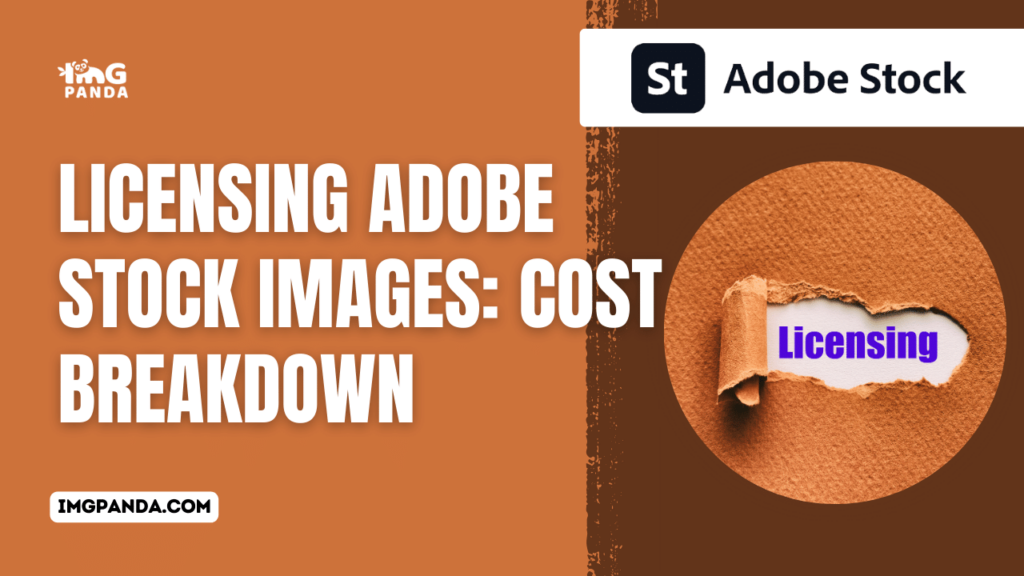The Importance of Licensing Adobe Stock Images
In the world of design, visuals matter. Whether you're a graphic designer, a web developer, or a content creator, the images you use can make or break your projects. Adobe Stock is a valuable resource that provides access to a vast library of high-quality images that can elevate your work to the next level.
But why is licensing Adobe Stock images so important? In this section, we'll delve into the significance of properly licensing these images and the benefits it brings to your creative endeavors.
Also Read This: How to Export from Photoshop to Behance
Understanding Adobe Stock Licensing

Adobe Stock is a treasure trove of images, but it's essential to grasp the intricacies of licensing to make the most of this valuable resource. The type of license you choose determines how you can use these images in your projects, so let's dive into the details.
1. Types of Adobe Stock Licenses
When licensing Adobe Stock images, you typically have two main options:
- Standard License: This license allows you to use the images in a wide range of creative projects, such as websites, blogs, social media, and more. It covers most common use cases and is suitable for the majority of users.
- Extended License: The extended license provides additional rights, making it suitable for more complex and widespread usage. It allows you to use the images in merchandise, templates for resale, and other extended applications.
2. Rights and Restrictions
While Adobe Stock offers a considerable degree of flexibility, there are still important rights and restrictions you should be aware of:
| Rights | Restrictions |
| You can use Adobe Stock images in digital or printed materials. | You cannot redistribute or sell the images as standalone files. |
| You can modify images to suit your project's needs. | You cannot use images in a defamatory or offensive manner. |
| You can use images in an unlimited number of projects. | You cannot use images for trademark or logo purposes. |
It's crucial to understand these rights and restrictions to avoid legal issues and ensure that you're using Adobe Stock images within the permitted guidelines.
3. Compliance with Adobe Stock Licensing
To ensure compliance with Adobe Stock licensing, always read and adhere to the licensing terms and conditions provided by Adobe. Additionally, it's a good practice to keep records of the images you use, their licenses, and their intended usage to avoid any potential misunderstandings.
Now that we've delved into the types of licenses, rights, and restrictions associated with Adobe Stock, you're better equipped to make informed decisions about using these images in your creative projects. The next section will break down the costs associated with Adobe Stock licensing, helping you manage your budget effectively.
Also Read This: How to Determine if Someone Has LinkedIn Premium and What Profile Features to Look For
Breaking Down the Costs
Understanding the cost structure of Adobe Stock is crucial for effective budget management and getting the most value out of your subscription. Let's explore the various elements that contribute to the costs of licensing Adobe Stock images.
1. Subscription Plans
Adobe Stock offers a range of subscription plans, each catering to different needs:
- Single-Asset Purchase: If you have sporadic image needs, you can purchase individual assets. This is a pay-as-you-go option.
- Monthly Subscription: Ideal for regular users, this subscription allows you to download a specific number of assets each month.
- Annual Subscription: This option offers a discount compared to monthly plans but requires an annual commitment.
Choosing the right subscription plan depends on your usage frequency and budget constraints. Monthly and annual subscriptions often provide cost savings compared to single-asset purchases.
2. Credit Packs
Credit packs are a flexible way to purchase Adobe Stock images. You buy a set number of credits, and you can use these credits to download images as needed. Credit packs are a good choice if you require images infrequently or if your needs vary from month to month.
3. Image Costs and Usage
The cost of Adobe Stock images varies based on the type of license and the image's quality:
| Image Type | Standard License Cost | Extended License Cost |
| Standard Quality | $9.99 per image | $79.99 per image |
| Medium Quality | $79.99 per image | $199.99 per image |
| Premium Quality | $249.99 per image | $499.99 per image |
Remember that the cost of images adds up quickly, so it's essential to choose the right quality level based on your project's needs and budget. Be mindful of the license type you require as well.
By understanding subscription plans, credit packs, and image costs, you can make informed decisions on how to balance quality and budget when licensing Adobe Stock images. The next section provides valuable tips for cost-effective licensing, ensuring you get the most out of your investment.
Also Read This: How to Record Audio or Video on Telegram
Tips for Cost-Effective Licensing
Licensing Adobe Stock images doesn't have to break the bank. With some strategic choices and best practices, you can maximize your investment and get the most out of your creative projects while staying within budget. Here are some tips to help you achieve cost-effective licensing:
1. Maximizing Your Subscription
If you opt for a monthly or annual subscription, make sure you maximize your usage each month. Don't let your allotted downloads go to waste. Plan your projects to ensure you get the most out of your subscription, whether it's downloading images, templates, or 3D assets.
2. Using Credits Wisely
If you purchase credit packs, be strategic about how you use them. Save credits for high-quality or premium images, which would be more expensive to purchase individually. Use free assets or included assets from your subscription for less critical components of your project.
3. Leverage Image Collections
Adobe Stock offers curated collections of images related to specific themes, seasons, or trends. These collections often provide excellent value as they contain high-quality images that fit a particular aesthetic. Exploring these collections can save you time and money compared to searching for individual images.
4. Use the Preview Function
Before committing to a purchase, use Adobe Stock's preview function. This allows you to see how an image fits into your project without actually licensing it. It's a handy way to ensure an image aligns with your vision before spending your credits or subscription downloads.
5. Monitor Your Usage
Keep a close eye on how many assets you've downloaded and what remains in your subscription or credit pack. This helps you avoid unexpected charges and ensures you're making the most of your investment without overextending your budget.
6. Explore Promotions and Discounts
Adobe Stock occasionally runs promotions or discounts on subscriptions and credit packs. Keep an eye out for these opportunities to save on your licensing costs. Subscribing to Adobe's newsletters or following them on social media can help you stay updated on such offers.
By following these tips, you can make your Adobe Stock licensing cost-effective and efficient. Careful planning, strategic use of subscriptions and credits, and taking advantage of promotions will ensure you get the most value from your investment while creating stunning visual content for your projects.
Also Read This: Everything You Should Know About Watching Bally Sports on YouTube TV
FAQs About Adobe Stock Licensing
Adobe Stock licensing can be a complex subject, and you may have questions regarding its usage. Here are some frequently asked questions to help you better understand how licensing works:
Conclusion
In the world of digital content creation, the importance of licensing Adobe Stock images cannot be overstated. These high-quality visuals can elevate your projects and make a significant impact on your audience. Understanding the intricacies of Adobe Stock licensing, from the types of licenses available to the costs associated with each image, is essential for creative professionals and businesses alike.
By selecting the right licensing option, managing your subscriptions or credits wisely, and staying within the licensing terms and conditions, you can make the most of Adobe Stock's vast image library while ensuring compliance with legal requirements.
Remember that Adobe Stock offers both flexibility and versatility, allowing you to find the perfect visual content for your projects. By following the tips for cost-effective licensing, you can create stunning visuals without breaking the bank. Explore collections, use previews, and keep an eye out for promotions to optimize your investment.
We hope this guide has provided you with valuable insights into Adobe Stock licensing and how to use it effectively. As you embark on your creative journey, may your projects be enhanced by the power of Adobe Stock, while keeping your budget in check and your content legal.
